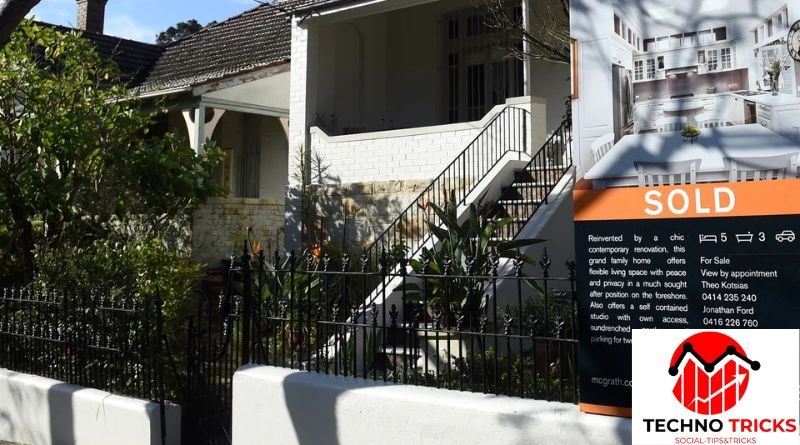Sydney Property Market Forecast for 2025: A Comprehensive Analysis
The Sydney housing market has always been a focal point of both domestic and international investors. As Australia’s largest city, its property trends significantly influence national economic conditions. With 2025 on the horizon, many are curious about what the future holds for the Sydney housing market. This article provides an in-depth analysis of factors that will shape the market in 2025, highlighting key trends, challenges, and opportunities for both buyers and investors.
Economic Factors Impacting the Sydney Housing Market in 2025
Sydney’s property market is highly sensitive to economic changes, and understanding these factors is crucial for anyone looking to buy or invest in real estate. In 2025, several economic indicators will play pivotal roles in shaping housing prices and demand.
Firstly, the national economy will have a direct impact on the housing market. If Australia’s GDP continues to grow at a steady pace, this will likely bolster consumer confidence, leading to increased demand for homes in Sydney. However, should economic growth stagnate or decline, this could lead to weaker market conditions and slower price growth.
Interest rates are another major factor. The Reserve Bank of Australia (RBA) adjusts rates to manage inflation and stimulate or slow economic activity. Higher interest rates tend to reduce demand for housing, as borrowing becomes more expensive, while lower rates make mortgages more affordable, fueling demand. In 2025, the direction of interest rates will be key in determining whether the market remains buoyant or experiences a correction.
Moreover, inflation rates will impact purchasing power. If inflation continues to rise, housing prices may increase, outpacing the growth of wages. This could make home ownership less attainable for many, especially first-time buyers.
Housing Supply and Demand Dynamics in Sydney
Supply and demand are the most fundamental forces driving the housing market. The housing shortage in Sydney has been a long-standing issue, and while efforts are underway to increase supply, the demand for homes continues to outstrip availability. This imbalance is expected to persist into 2025, contributing to price growth.
Several factors contribute to the supply constraints in Sydney. Zoning laws, high construction costs, and limited availability of land in desirable areas of the city have all contributed to a slow pace of new housing development. The ongoing pandemic has also slowed construction, further exacerbating the issue.
On the demand side, Sydney’s attractiveness as a global city, its thriving job market, and its status as a cultural hub continue to draw new residents. Immigrants and international students are key contributors to the demand for housing, and this is unlikely to change in 2025. With global mobility likely to increase, Sydney will continue to attract people from all over the world, putting additional pressure on the housing market.
The Impact of Government Policies on the Sydney Housing Market
Government policies have historically played a significant role in shaping the housing market, and this will continue to be the case in 2025. The Australian government has introduced various policies to try to stabilize the market and make housing more affordable. These include incentives for first-time homebuyers, such as the First Home Owner Grant, and various schemes that allow buyers to enter the market with smaller deposits.
In 2025, there may be further initiatives aimed at addressing the affordability crisis. This could include more significant reforms to zoning laws or increased funding for affordable housing projects. However, the effectiveness of such measures will depend on their execution and the ability of local governments to implement them efficiently.
Additionally, policies regarding foreign investment in Australian real estate will continue to shape the market. Foreign buyers, particularly from China, have been significant players in the Sydney property market over the past decade. While regulations have been tightened in recent years, foreign investment is still a key driver of demand, particularly in the luxury market.
Sydney’s Housing Market for First-Time Buyers
First-time buyers in Sydney have faced significant challenges in recent years, primarily due to the high cost of property. In 2025, while the market is expected to remain competitive, there may be opportunities for those who are looking to enter the market.
One of the main hurdles for first-time buyers is the high deposit requirement. With Sydney property prices well above the national average, it can take years to save for a deposit, especially for those who are just starting out in their careers. However, government incentives, such as the First Home Buyer Assistance Scheme, could provide some relief. In addition, changes in lending criteria could make it easier for first-time buyers to secure mortgages.
However, the challenge of affordability remains a concern. In the most sought-after areas of Sydney, home prices are expected to continue rising, putting homeownership out of reach for many aspiring buyers. As a result, we could see an increasing number of first-time buyers opting for smaller homes or properties in outer suburbs or even regional areas.
Sydney’s Luxury Housing Market in 2025
The luxury segment of Sydney’s housing market is expected to remain strong in 2025. While the broader market may experience slower growth, demand for high-end properties is likely to continue to rise, particularly in sought-after areas such as the Eastern Suburbs, the North Shore, and the CBD.
The primary drivers of demand in the luxury market include foreign investment, wealthy locals, and demand from high-net-worth individuals (HNWIs) seeking second homes. Sydney’s status as an international city with a vibrant economy, world-class amenities, and stunning waterfront properties makes it an attractive destination for wealthy individuals looking for luxury homes.
The luxury housing market is also likely to benefit from strong international interest in Sydney’s real estate. In particular, the growing wealth in Asia, particularly China, continues to support demand for high-end properties. The luxury market is less sensitive to interest rate changes, as many buyers in this segment are cash-rich and can purchase without needing to rely on financing.
The Future of Renters in Sydney
Renting in Sydney is becoming an increasingly common option, especially given the high cost of homeownership. In 2025, we can expect the rental market to remain competitive, with strong demand for both short-term and long-term rental properties.
One of the key challenges facing renters in Sydney is affordability. As property prices rise, landlords are likely to increase rents to cover their expenses, leading to higher rental prices. Additionally, the lack of affordable housing options will put pressure on rental demand in certain areas.
However, there may be some relief for renters in 2025 if new rental regulations are introduced to protect tenants. These could include rent control measures, improved tenancy laws, or increased investment in affordable rental properties. The focus on renters’ rights may help make Sydney’s rental market more stable in the years ahead.
Technological and Social Trends Shaping Sydney’s Housing Market
In addition to economic and policy factors, technological advancements and social changes will also have an impact on the Sydney housing market in 2025.
One of the key technological trends is the growth of online property platforms, which have revolutionized the way people buy, sell, and rent homes. With more people relying on digital platforms to search for properties, there is a greater emphasis on virtual tours, detailed property listings, and data analytics. This trend is likely to continue in 2025, with further developments in augmented reality (AR) and virtual reality (VR) allowing potential buyers and renters to experience properties in new and innovative ways.
Social trends also have a profound impact on housing demand. Changing work habits, particularly the shift towards remote and hybrid work, may influence where people choose to live. With more flexibility in working arrangements, some people may opt to live in suburban or regional areas rather than central Sydney. This shift could impact demand in different parts of the city and potentially lead to a decentralization of the housing market.
Conclusion
The Sydney housing market is set to face a range of challenges and opportunities as we approach 2025. Economic factors, supply and demand dynamics, government policies, and technological changes will all influence the future of the market. While Sydney’s property prices may continue to rise, particularly in the luxury segment, the affordability crisis is likely to remain a key concern, especially for first-time buyers.
However, with continued investment in infrastructure and potential government interventions, the market may evolve in ways that make it more accessible to a wider range of buyers. For investors and prospective homeowners, staying informed and adaptable will be crucial to navigating the complexities of the Sydney housing market in 2025.
May Also Read: thetechnotricks



